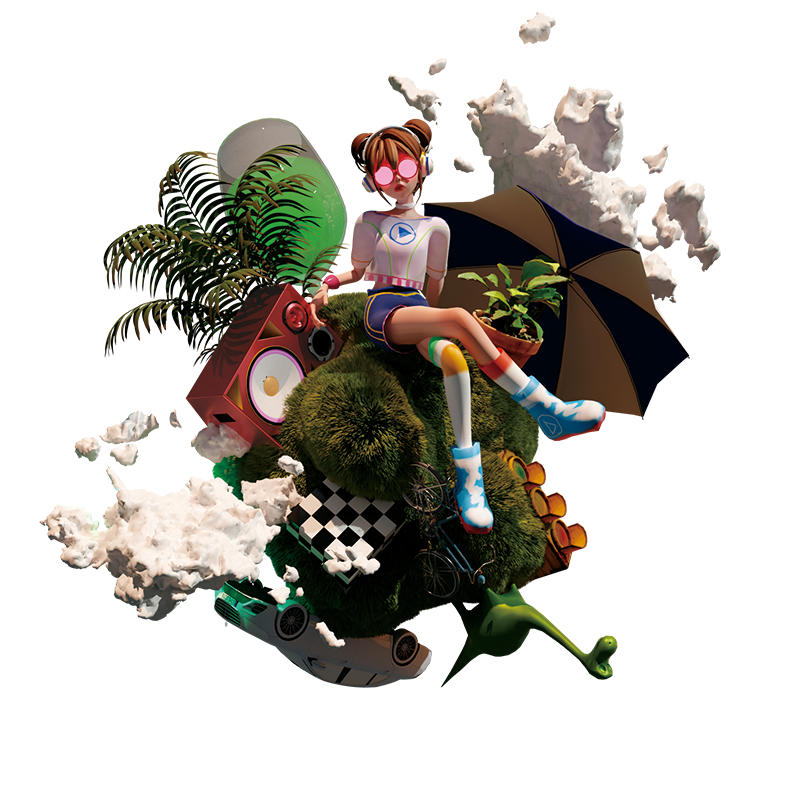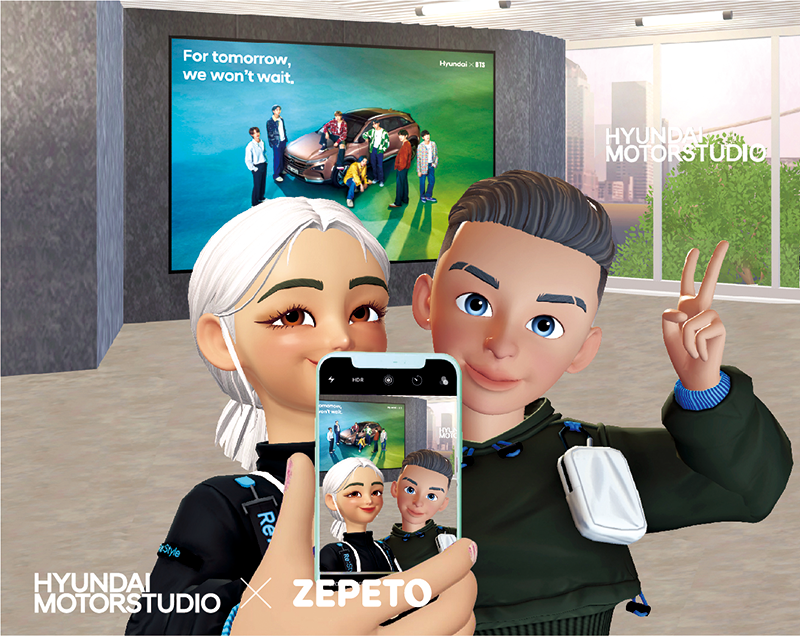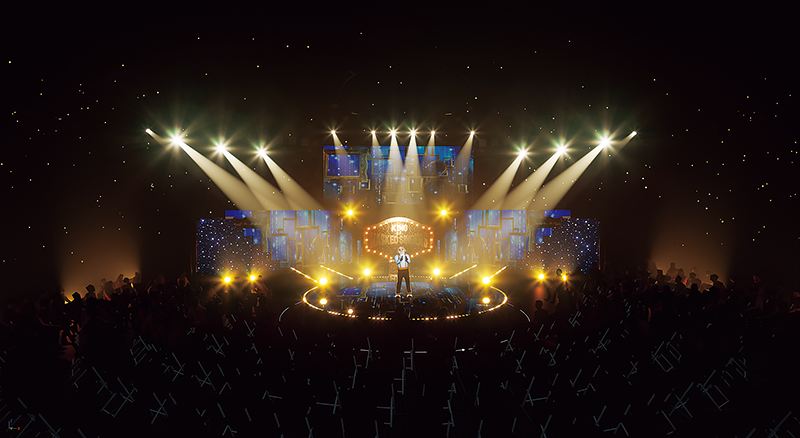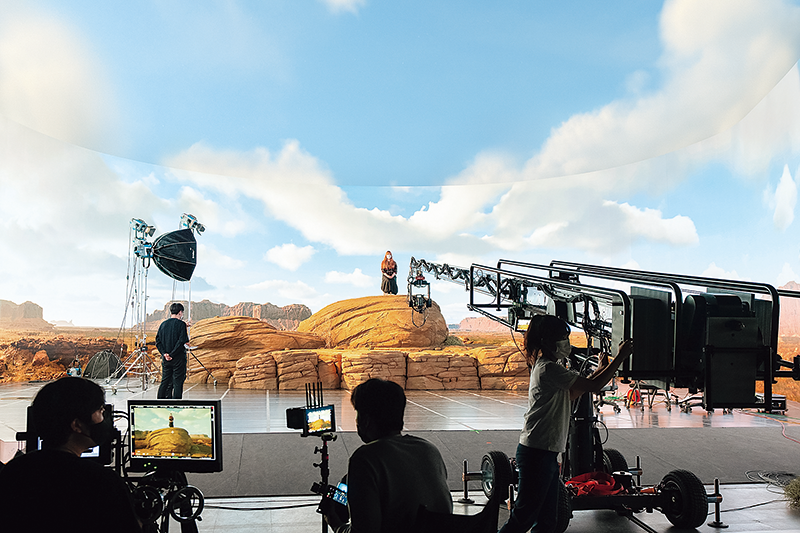Digital content brings imagination to life, offering inspiration and wonder. Against this backdrop, a growing number of Korean companies are attracting attention by enriching the arts with their technological prowess.

The Meta Music System, an AI-based mobile application, was developed by the music-tech startup Verses and honored with the CES 2023 Best of Innovation award. The app has changed the paradigm of enjoying music by enabling users in the metaverse to participate in the music of their favorite musicians.
© Verses
Technological advances have placed digital means at the center of the creation, dissemination, and appreciation of arts and culture. Among the numerous factors contributing to the mainstreaming of artistic and cultural content, the most important seems to be the way it is received by the public. A significant amount of it had already moved to the digital realm before the COVID-19 pandemic. This trend accelerated during the many months of self-isolation and social distancing, when face-to-face contact was extremely limited. At the forefront of this shift are mobile devices and the metaverse.
Virtual World

Users’ avatars pose for souvenir pictures at Hyundai Motorstudio, a brand experience hall built by Hyundai Motor Company on the ZEPETO metaverse platform in 2022. Through their avatars, users can play, shop, and work with others in ZEPETO’s virtual realm.
© Hyundai Motor Group
K-pop has transcended its Korean origins to captivate audiences around the world. The performance stage is no longer a mere platform for entertainment but has become a canvas for artistic imagination. This transformation has been facilitated by extended reality (XR) technology, which can turn massive LED displays into immersive backgrounds. With XR, artists can transport themselves and their audiences to places ranging from tourist attractions to outer space, and even imaginary futuristic environments. The backdrops dynamically adjust to camera movements, offering the audience the chance to experience the space as if they were physically present in it.
METALOCAT, a leading provider of immersive content production solutions, s virtual environments that blend seamlessly with physical stages, as demonstrated in MBC TV’s popular entertainment programs Show! Music Core and The King of Mask Singer. The company helps production teams reduce their workload by experimenting with bold imaging techniques.
XR-based virtual spaces are mushrooming in the content production field. One example is the Virtual Production Stage at the CJ ENM Studio Center in Paju, a city in Gyeonggi Province. The state-of-the-art facility features large LED screens on all walls and ceilings, which enable the seamless integration of virtual backgrounds into live-action shots. This eliminates the need to shoot on location, saving a significant amount of time and money. Expectations are high for new and different forms of content because the quality of the final product can be improved quickly.
Another notable trend is the virtualization of content itself. The technology for graphics-based virtual characters and backgrounds, already widely used in movies and K-dramas, poses a major challenge to producers due to the need for detailed and elaborate representation in a virtual environment.
Dexter Studios, specializing in content planning and production, has clearly shown its expertise in works such as Space Sweepers (2021), a Netflix original by Jo Sung-hee, as well as Alienoid by Choi Dong-hoon (2022) and Kim Yong-hwa’s The Moon (2023), both CJ ENM productions. The achievements of Dexter Studios demonstrate that while imagination is at the core of science fiction, the immersiveof ideas is essential to creating high-quality cultural products.
The virtualization trend in pop culture content is undeniable, as evidenced by the steady growth of ZEPETO, a metaverse platform founded in 2018. Operated by NAVER Z, this immersive social universe allows users toavatars and virtually interact with others without spatial limitations. Its primary user base comprises people in their 20s and 30s. Businesses in and outside of Korea use the platform to increase brand awareness.
Creative AI

Immersive content production company METALOCAT started as an in-house venture at MBC in January 2022 and became independent in 2023. The photo shows a scene from the MBC entertainment program The King of Mask Singer. A virtual stage was d using a 3D game engine.
© METALOCAT
Since the advent of computers, digital devices have become essential as creative outlets. Paraphernalia used for centuries have suddenly become virtually obsolete; paper has given way to screens, and pencils to keyboards and styluses. However, only a few short decades after the monumental shift from analog to digital input methods, another shift is already underway. We are now advancing into the uncharted territory of using artificial intelligence for creative .
Painting is one of the fields at the forefront of the AI creativity revolution. Machine learning models, trained on vast amounts of artwork, can now mimic the masterpieces of famous artists. They can also draw in a variety of artistic styles at their users’ request, producing images so realistic that they are indistinguishable from photographs.
Karlo 2.0, an image generation model developed by AI technology company Kakao Brain, can produce large, high-quality images in seconds by using a text-to-image database of about 300 million images. In addition to real-life details, the ability tohigh-quality images with ease is attracting worldwide attention.
While Karlo’s work inspires admiration, it also sparks debate about its use and AI-generated images in general. Who owns the copyright? The AI developer, the user, or the original artists whose works were fed into a database? As some AI-generated images have even been recognized and awarded as pieces of art, an answer to this and other questions must be found.
Verses, an entertainment software company, developed an AI-centered music platform called the Meta Music System. AI can code, compose, and arrange tunes, but the Meta Music System allows users to participate directly in the production of music videos, adding aof imagination. Users can not only enjoy music but also meet and chat with artists. The opportunity to produce music and share ideas opens new channels that make music a less passive form of entertainment.
Value of Technology

Shooting of video content at CJ ENM’s Virtual Production Stage. The state-of-the-art facility has large LED screens on all walls and ceilings, which eliminate the need for repeated set installation and dismantling and allow for the seamless integration of virtual backgrounds into live-action shots.
© CJ ENM
The purpose of combining technology with artistic and cultural content is a quest for greater creativity in . The barriers surrounding music have already been broken down decades ago by the Musical Instrument Digital Interface (MIDI), a communication protocol that connects devices that make and control sound, such as electronic musical instruments and computers. Meanwhile, the spread of the web has opened the door for anyone to become a webtoon creator. Likewise, YouTube has made it possible for anyone to share creative output with a global audience, and the metaverse provides a space where viewers can enjoy artworks without limitation.
The direction of technological progress is clear. It is now expanding the scope of creative activity beyond the confines of the conventional art world, dominated by experts and enthusiasts, to something for anyone to enjoy.
One of the goals of publicly available internet services is to break down barriers between social groups. It is only natural that it should do the same for cultural content.
The divide between creators and audiences is becoming increasingly blurred, empowering everyone to express themselves freely and equally. This is closely related to the raison d’être of arts and culture. After all, the value of all artworks and cultural content comes from people. The arts and culture ecosystem will further flourish as more people appreciate works of art, understand the intentions of artists, and contribute to the cycle of artistic development by expressing their own perspectives.